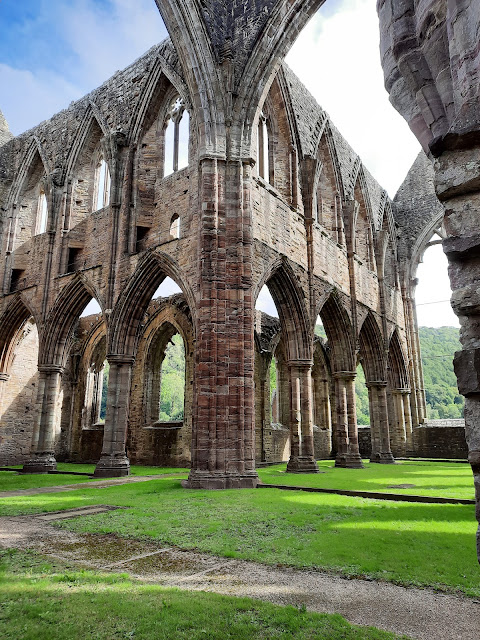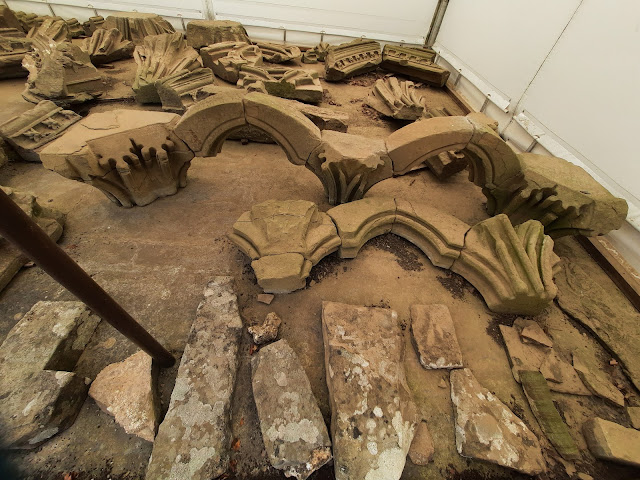As Hubby and I are now in our third year of membership with English Heritage we can enjoy free admission to all properties in Wales (CADW), Scotland (Historic Scotland) and OPW (Ireland).
On our recent trip to Cardiff we visited Tintern Abbey, Chepstow Castle and Raglan Castle. I have blogged each property separately and although my photos show just how superb the properties are I have added notes taken from the Cadw website.
Our first visit was to Tintern Abbey.
Tintern Abbey stands in roofless splendour on the banks of the River Wye nearly 500 years since its tragic fall from grace.
Originally a timber building it was founded in 1131 by Cistercian monks, a simple stone church and cloisters came later. In 1269, thanks to the patronage of wealthy Marcher lords, the white-robed monks built a new abbey and created one of the masterpieces of British Gothic architecture. The great west front with its seven-lancet window and the soaring arches of the nave still takes your breath away.
The monks were still handing out alms on his behalf in 1535, but just a year after King Henry VIII’s English Reformation began Tintern surrendered in the first round of the dissolution of the monasteries — and the great abbey began slowly to turn into a majestic ruin.
The abbey ruins lay forgotten until the 18th century when Tintern experienced a second heyday as a major tourist destination.
A popular engraving by the Buck brothers, published in 1732, was the start of the interest, followed by the Reverend William Gilpin’s bestselling account of his Wye River voyage in 1770.
The ivy-covered ruins of Tintern were caught up in a surge of romantic interest in the ‘Sublime’ and the ‘Picturesque’. Travellers who were unable to visit Europe due to the French Revolution and Napoleonic Wars had begun to visit the wild landscapes of Britain instead.
They flocked to the Wye Valley, arriving on small boats laden with picnic hampers. JMW Turner's magnificent watercolours of Tintern were exhibited at the Royal Academy in 1794-95, and William Wordsworth wrote his famous poem ‘Lines Composed a Few Miles Above Tintern Abbey’ in 1798.
By now Tintern Abbey was a bustling tourist attraction, and today the great walls and arches in their setting of wild natural beauty haven’t lost their magic, it's an amazing sight.
We had a superb visit, it was quite overwhelming looking up at such a dominant structure.












No comments:
Post a Comment
I'm so pleased you're enjoying my travel and wine ramblings - I love reading your replies too, thank you for posting a comment